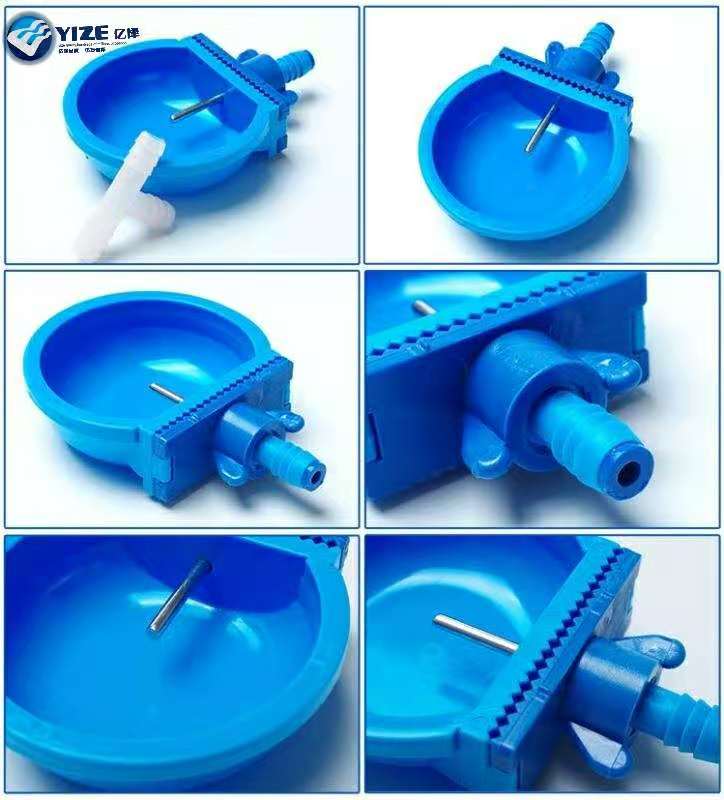Exploring the Benefits of Multi-Tiered Chicken Cages for Enhanced Poultry Farming
Aug . 16, 2024 21:50 Back to list
Exploring the Benefits of Multi-Tiered Chicken Cages for Enhanced Poultry Farming
The Importance of Layer Chicken Cages in Modern Poultry Farming
In recent years, the poultry industry has seen a significant transformation, primarily driven by the increasing demand for eggs and chicken products. A crucial aspect of this transformation has been the implementation of layer chicken cages. These cages are designed specifically for hens that lay eggs, optimizing their living conditions and maximizing productivity. Here, we explore the benefits, design considerations, and impact of layer chicken cages on poultry farming.
Advantages of Layer Chicken Cages
Layer chicken cages offer several advantages over traditional free-range systems. First and foremost, they provide a controlled environment that enhances the health and well-being of the hens. The cages are designed to meet the specific needs of layers, including proper space, ventilation, and feeding systems. This controlled environment minimizes stress, thus leading to better egg production rates.
Moreover, layer cages dramatically improve biosecurity. By housing chickens in individual cages, the spread of diseases can be curtailed effectively. In free-range systems, where birds have more contact with one another and their environment, diseases can proliferate quickly, jeopardizing the flock's health and the farmer's livelihood. Layer cages minimize these risks, allowing for easier monitoring and management of the hens’ health.
Design Considerations
The design of layer chicken cages has evolved significantly to meet the demands of both animal welfare and production efficiency. Modern cages are often multi-tiered, maximizing vertical space and allowing farmers to house more hens without requiring extensive land. Each cage is equipped with features that promote the hens' comfort, such as proper perches, nesting areas, and access to clean water and feed.
layers chicken cages

For instance, many cages now incorporate automated feeding and watering systems. These innovations ensure that hens receive a consistent supply of food and hydration, significantly enhancing their productivity. Furthermore, the design includes easy access for farmers, which facilitates routine checks and maintenance. This user-friendly approach helps ensure that both the hens and the poultry staff work in a safe and efficient environment.
Impact on Egg Production
The implementation of layer chicken cages has had a profound impact on egg production rates. Intensive farming methods, including the use of cages, allow producers to maximize output while maintaining quality. Hens in a well-designed cage system can lay more eggs than those in traditional systems, often producing upwards of 300 eggs per hen each year. This increased productivity is essential in meeting the growing global demand for eggs, particularly in regions where the population is expanding rapidly.
However, it's also worth noting the ongoing discussions surrounding animal welfare. Critics of cage systems argue that they restrict natural behaviors such as nesting and foraging. As a response, many farmers are exploring enriched cage designs that provide hens with more space and stimulation. This evolving approach reflects a balance between productivity and welfare, ensuring that the needs of the hens are met while also supporting the economic viability of poultry farming.
Conclusion
Layer chicken cages are a cornerstone of modern poultry farming, providing substantial benefits in terms of production efficiency, health management, and biosecurity. As the industry continues to evolve, the focus on improving cage designs will likely intensify, promoting not only higher productivity but also enhancing the welfare of the hens. By addressing these dual priorities, layer chicken cages can play a pivotal role in the sustainable advancement of the poultry industry, ensuring that it meets both consumer demands and ethical responsibilities. The future of poultry farming lies in a balanced approach that respects animal welfare while also achieving the economic goals essential for feeding a growing world.
-
Hot Sale 24 & 18 Door Rabbit Cages - Premium Breeding Solutions
NewsJul.25,2025
-
Automatic Feeding Line System Pan Feeder Nipple Drinker - Anping County Yize Metal Products Co., Ltd.
NewsJul.21,2025
-
Automatic Feeding Line System Pan Feeder Nipple Drinker - Anping County Yize Metal Products Co., Ltd.
NewsJul.21,2025
-
Automatic Feeding Line System - Anping Yize | Precision & Nipple
NewsJul.21,2025
-
Automatic Feeding Line System - Anping Yize | Precision & Nipple
NewsJul.21,2025
-
Automatic Feeding Line System-Anping County Yize Metal Products Co., Ltd.|Efficient Feed Distribution&Customized Animal Farming Solutions
NewsJul.21,2025






